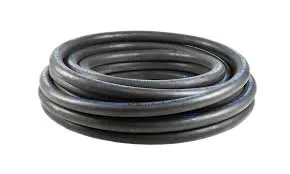High Pressure Power Steering Hose Replacement Guide and Tips for DIY Mechanics
High Pressure Power Steering Hose Replacement
Power steering is a crucial component of modern vehicles, making steering easier and more efficient. Central to this system is the power steering hose, particularly the high-pressure hose, which transports hydraulic fluid from the pump to the steering gear. Over time, the high-pressure power steering hose can wear out, develop leaks, or become damaged, necessitating replacement. This article will guide you through the importance of the high-pressure power steering hose, indicators of its failure, and the steps to replace it.
Importance of the High-Pressure Power Steering Hose
The high-pressure power steering hose is responsible for transporting hydraulic fluid under high pressure to the steering system. This fluid pressurizes the steering mechanism, allowing for easier maneuverability of the vehicle. A properly functioning power steering hose is essential for maintaining the efficiency of the steering system and ensuring a safe and pleasant driving experience. Damage or failure of this hose can lead to a loss of power steering function, making steering difficult and increasing the risk of accidents.
Signs of a Failing High-Pressure Power Steering Hose
There are several indicators that your high-pressure power steering hose may need replacement
1. Fluid Leaks One of the most common signs of a failing power steering hose is the presence of fluid leaks. Hydraulic fluid may pool under the vehicle or around the steering components. If you notice red or clear fluid accumulating, it could be a sign of a leak in the high-pressure hose.
2. Steering Difficulty If the steering feels heavy or unresponsive, it may be due to a lack of hydraulic pressure caused by a faulty hose. Difficulty turning the steering wheel, especially at lower speeds, is a clear sign that something is amiss.
3. Noise Unusual noises, such as whining or groaning sounds when turning the steering wheel, can indicate that the power steering pump is struggling to draw fluid due to a leak in the hose.
4. Visual Inspection A thorough inspection may reveal visible wear, kinks, or cracks in the power steering hose. It's essential to check for bulges or areas that appear softer than the surrounding hose material.
Steps to Replace the High-Pressure Power Steering Hose
high pressure power steering hose replacement

Replacing a high-pressure power steering hose can be undertaken as a DIY project with the right tools and precautions. Here’s a general step-by-step guide
1. Gather Tools and Materials Before starting, gather the necessary tools a socket set, wrenches, pliers, a fluid catch container, and a replacement hose.
2. Prepare the Vehicle Park the vehicle on a flat surface, engage the parking brake, and ensure the engine is off and cool. For safety, disconnect the negative battery cable.
3. Locate the Hose Identify the high-pressure power steering hose. It typically runs from the power steering pump to the steering gear. Consult your vehicle’s service manual for specific locations related to your model.
4. Remove the Old Hose Place a fluid catch container underneath the vehicle to catch any leaking fluid. Using the appropriate wrench, carefully loosen and remove the bolts or fittings securing the hose. Be prepared for some fluid spillage.
5. Install the New Hose Once the old hose is removed, install the new high-pressure power steering hose. Make sure all fittings are securely tightened, as leaks can occur if they are not properly connected.
6. Replenish the Fluid Refill the power steering reservoir with the manufacturer-recommended hydraulic fluid. Check for any leaks around the newly installed hose.
7. Test the System Start the vehicle and turn the steering wheel left and right several times to allow the fluid to circulate through the system. Inspect for leaks.
8. Final Checks After testing, ensure that the area around the newly installed hose is clean and dry. Reconnect the negative battery cable.
Conclusion
Replacing the high-pressure power steering hose is a vital maintenance task that can impact the performance and safety of your vehicle. If you notice signs of wear or failure, it’s essential to address the issue promptly. With the proper tools and attention to detail, even those new to car maintenance can manage this task. Regular inspections and maintenance will help ensure that your power steering system remains in optimal condition, enhancing your overall driving experience.
-
Ultimate Spiral Protection for Hoses & CablesNewsJun.26,2025
-
The Ultimate Quick-Connect Solutions for Every NeedNewsJun.26,2025
-
SAE J1401 Brake Hose: Reliable Choice for Safe BrakingNewsJun.26,2025
-
Reliable J2064 A/C Hoses for Real-World Cooling NeedsNewsJun.26,2025
-
Heavy-Duty Sewer Jetting Hoses Built to LastNewsJun.26,2025
-
Fix Power Steering Tube Leaks Fast – Durable & Affordable SolutionNewsJun.26,2025

